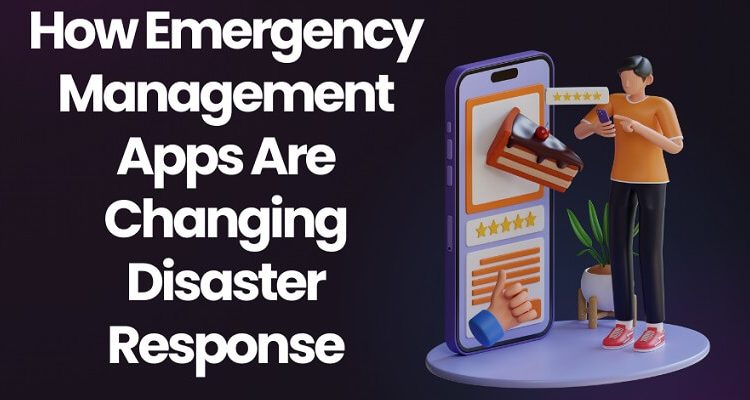How Emergency Management Apps Are Changing Disaster Response

The orchestration of disaster response has entered a new era with the transformative influence of emergency management software. In this digital age, these apps are not just tools but dynamic catalysts, reshaping the way we anticipate, react to, and recover from disasters. This article looks into the profound impact of emergency management apps on disaster response, elucidating how they are revolutionizing the landscape of crisis management.
How Emergency Management Apps Are Changing Disaster Response:
1. Early Alert Systems: Pioneering Proactivity
Emergency management solutions have elevated early alert systems to new heights, instilling proactivity into disaster response. These apps harness real-time data streams and advanced algorithms to provide instantaneous alerts about impending crises, from severe weather events to wildfires. By offering individuals and communities precious minutes to prepare and evacuate, these apps have become life-saving sentinels in disaster-prone regions.
2. Geospatial Mapping and Precision Response
Geospatial mapping, a cornerstone of modern disaster response, has found a digital ally in emergency management apps. With these apps, responders can access precise and up-to-date maps of disaster-affected areas. They enable the identification of critical zones, resource allocation optimization, and the creation of efficient evacuation routes. Drones, guided by these apps, capture aerial images, offering invaluable insights for search and rescue operations, damage assessment, and environmental monitoring.
3. Seamless Communication and connectivity
Effective communication and connectivity between agencies are the basis of successful disaster response. Emergency management solutions facilitate resilient communication channels, ensuring that responders stay connected even in areas with damaged infrastructure. Furthermore, they empower individuals to share real-time information via social media and mobile apps, promoting collaboration during emergencies. Digital platforms enable agencies to work harmoniously, ensuring a coordinated response to crises.
4. Data Analytics and Informed Decision-Making
Emergency management apps leverage big data and predictive analytics to enhance preparedness. By analyzing datasets, including historical data, weather patterns, demographics, and also social media trends, these apps can forecast potential risks and vulnerabilities. Moreover, this data-driven approach empowers emergency managers to tailor strategies for disaster prevention and response. Machine learning models help identify patterns, further refining response tactics.
5. AI-Driven Rapid Decision Support
Artificial intelligence and machine learning embedded in emergency management apps expedite decision-making. These apps process vast datasets from numerous sources, such as weather forecasts, traffic patterns, and also social media updates, yielding real-time insights. These insights are invaluable for resource allocation, incident prediction, and also risk assessment. Besides this, Machine learning models identify data patterns, enhancing strategy adjustments for more effective responses.
6. Mobile Apps and Public Empowerment
Mobile applications designed for emergency management empower the public to take an active role in their safety. Government and organizational emergency alert apps deliver critical information directly to users’ smartphones, offering real-time notifications about severe weather, Amber Alerts, and imminent threats. Many of these apps also feature interactive elements, including maps, shelter locations, and also emergency contact information, equipping individuals to make informed decisions during crises.
7. Robotics and Automation: Enhanced Efficiency
Emergency management apps are increasingly integrated with robotic and automation systems, elevating response efficiency. Robots adept at navigating hazardous environments aid in search and rescue operations, perform dangerous tasks, and reduce the risk to human responders. Drones, equipped with thermal cameras, contribute to nighttime search and also rescue missions. As technology advances, these robotic systems become more versatile and capable, further augmenting emergency response capabilities.
8. Cybersecurity: Safeguarding Critical Infrastructure
In the digital age, cybersecurity plays a pivotal role in emergency management. Technology not only protects critical infrastructure, such as power grids and communication networks, from cyberattacks but also facilitates rapid responses in case of a breach. Cybersecurity experts collaborate with emergency management teams to maintain the integrity and functionality of vital infrastructure during crises.
Conclusion: Innovation Paving the Way to Resilience
Emergency management apps, such as those created with no code app builders like Fliplet, are at the forefront of innovation in disaster response. They have evolved from mere tools to dynamic enablers, shaping the landscape of crisis management. By embracing technology, emergency managers, responders, and communities can collaborate effectively, mitigate risks, and also build resilience in an ever-evolving world. As these apps continue to advance, their role in safeguarding lives and also property will only grow in importance. Moreover, they stand as digital pioneers, reshaping the future of disaster response with every update and innovation.
